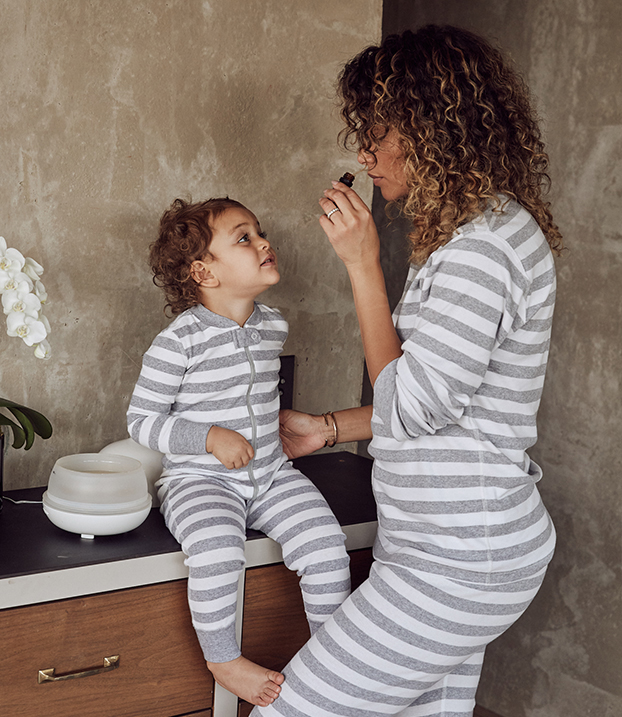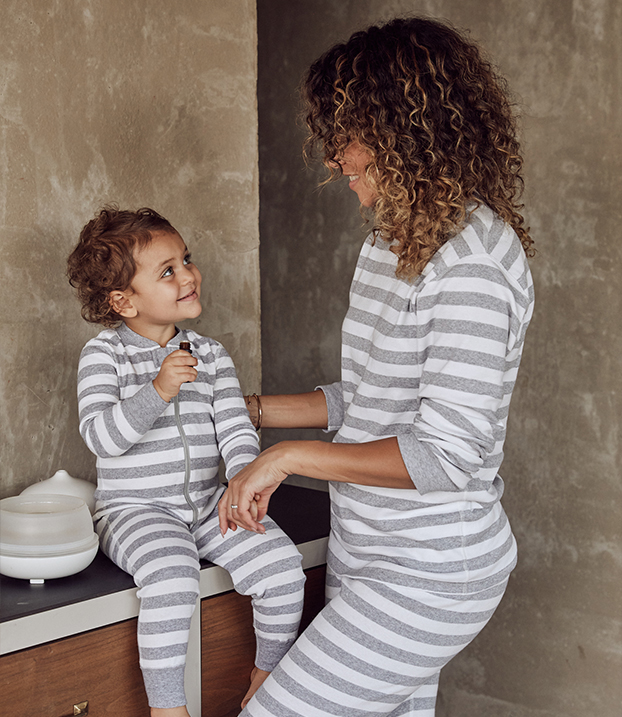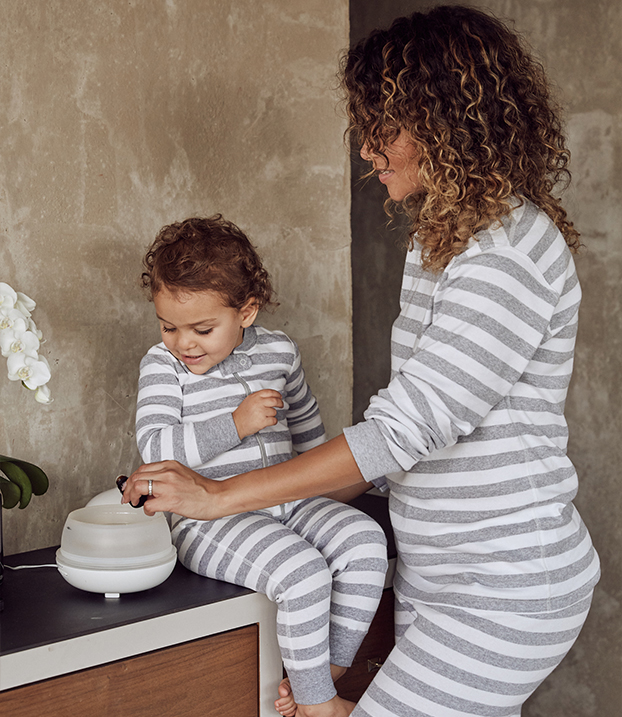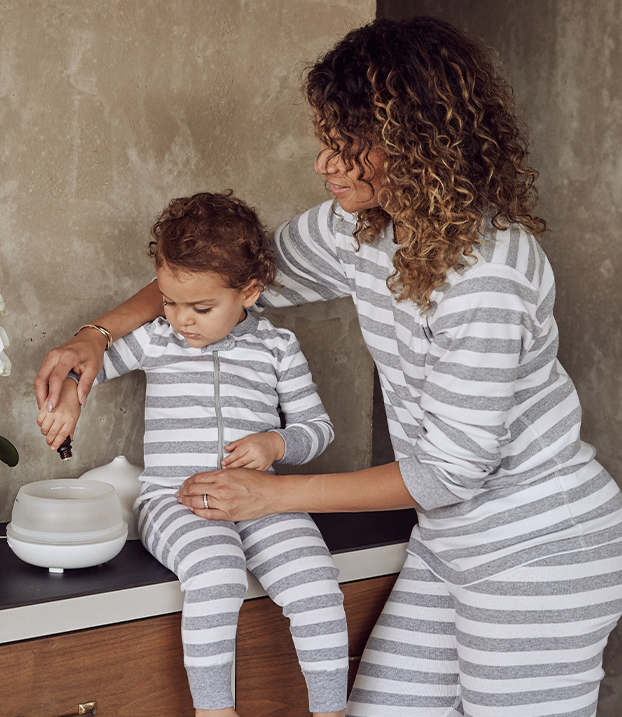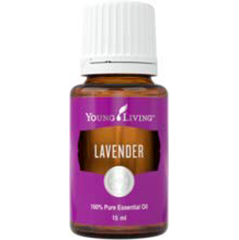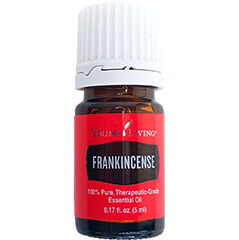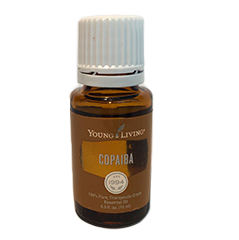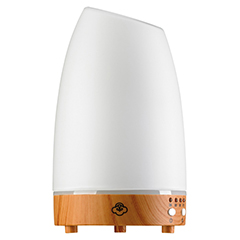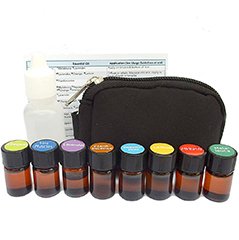How to Safely Use Essential Oils on Children
Elizabeth Biscevic
There seems to be an essential oil remedy for everything, from digestion, insomnia, and headaches to hand sanitizer and toilet cleaner. For new mamas, especially those who like to stay away from harsh chemicals and hard-to-pronounce ingredients, the benefits of oils are seemingly endless. But as we know, just because something is natural doesn’t mean it’s safe, especially when it’s applied topically or diffused in the air.
“These are the original form of plant medicine,” says Catalina Clark, a student midwife, birth doula, and essential oil expert. “That said, they can be up to 200 times stronger. A drop of peppermint oil is like 100 peppermint teas. These are powerful chemical constituents from plants.” Doing your research first is necessary.
It’s important to remember that newborns are more sensitive to smells. That’s why the general recommendation is to wait until after the newborn phase, or around 2 to 3 months before introducing essential oils. That’s especially important if you’re breastfeeding: breast milk glands smell like amniotic fluid, which helps your baby recognize their mama and find the nipple.
Catlina cautions new mamas against wearing any scents—whether natural or synthetic—during the newborn phase. “Any scents can be disruptive for bonding and your babe’s transition from womb to world,” she says. “I don’t even recommend using deodorant when breastfeeding.” Catalina waited until her baby was four months before introducing oils.
When you are ready, Catalina believes, “First and foremost, the most important thing is the quality of the oils. You want to use oils that are organic, non-GMO, grown in pesticide-free farms that are 100 % pure therapeutic grade.” The FDA doesn’t highly regulate oils, so if you purchase them from the store, even health food stores—a bottle of what’s labeled as pure essential oil only has to contain 5% pure therapeutic grade for them to be labeled as such. It can be filled with filler oils like carrier oils or with synthetic fragrances. “That’s why if you buy a bottle of lavender essential oil from your local grocery store and compare it to a brand like Young Living they smell completely different.”


A drop of peppermint oil is like 100 peppermint teas, these are powerful chemical constituents from plants.
“Anything you’re diffusing into the air or applying topically on your skin is going to be absorbed into your bloodstream and your baby’s bloodstream, so you want to make sure it’s absolutely pure and organic,” Says Catalina. Then, start slow.
Just like you introduce solid foods, testing for potential allergies is always the first step, and you always test on yourself first. Mix a drop of essential oil with a carrier oil, like coconut or almond oil, and put it on yourself. If there’s no reaction after a few hours, perform a patch test on your little one. Using an essential oil that’s been well diluted with a carrier, put a small dab on your babe’s feet. “You choose the feet because it’s the farthest body part from their nose, and also where oils are most effectively absorbed,” says Catalina.
Catalina recommends, “Any recipe you’re going to use for yourself, cut that oil in half. If you normally dilute ten drops for yourself, use five for your baby when introducing.” You can increase from there as needed.
In most cases, citrus and floral essential oils are considered most easily tolerated for babies. Oils like chamomile, lavender, sweet orange, rose, and geranium can be calming, safe, and well-received for your little. Oils like lemon, grapefruit, and myrtle can be blissfully uplifting post-nap, sweet orange and dill can help ease an upset stomach, neroli can ease pain and discomfort, and copaiba is a godsend for teething woes.
Catalina says, “The two basic, best, and safest essential oils for babies are lavender and copaiba. Lavender for sleep and fussiness and copaiba for immune support and teething.”
For mamas, Catalina’s favorite recommendation is Frankincense. “There’s a saying out there: When in doubt, pull frank out.” Frankincense is an all-purpose oil that works exceptionally well for settling the nervous system and can help pull new mamas out of turbulent emotional states.
Because essential oils are powerful medicines, some oils should be used with caution around developing systems.
The general recommendation is waiting until babies are two years old before introducing “hot oils”—oils that cause a hot or warming feeling when applied to the skin, like peppermint, wintergreen, eucalyptus, sage clove, cinnamon, and rosemary. Oils like these can be irritating to the respiratory system and should be used with caution. “If you do choose to use these oils on your baby, use them mindfully and sparingly,” says Catalina, who does include some of these oils, like eucalyptus when she or her baby has a cold, in blends when needed. “Again, quality matters,” she says, as most issues made about these oils have come from impure variations. “A synthetic form of eucalyptus can be very damaging.”
Whether you’re diffusing into the air or applying in a carrier oil for their post-bath massage, a mama’s presence is the most important part. Your babe will pick up on your vibe when you’re applying lavender to their feet and they’ll feel your love when you rub a drop of copaiba on their sore gums. Mindfulness matters.





